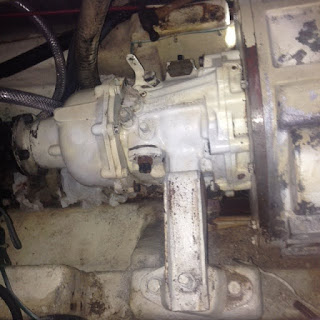After ten years of fighting with Cummins' plastic overflow bottle, today it was removed from the port, forward side of the engine and relocated to the engine room's forward bulkhead. It's actually nice to have the bottle off the engine. Not only will the bottle not be shaken to death, but the 5 pound metal bracket that held the bottle on the engine is gone too.
While blowing all the water lines today I found the potable water's pressure tank completely full of water. There appears to be a hole in the bladder. It was drained and reinstalled. Need to keep an eye on it.


























